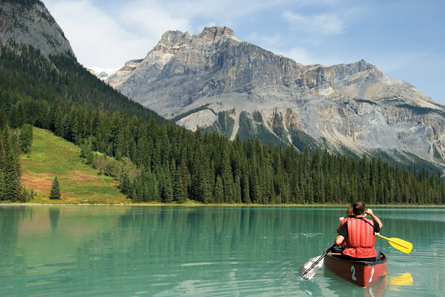Module 3 Intro
1. Module 3 Intro
1.1. Big Picture
Module 3
 Big Picture
Big Picture
Vacationing! Who wouldn’t want to take off somewhere on a vacation? When you think of going somewhere, it is usually somewhere far from where you live. The place you visit may also be quite different from your area in climate and scenery. The fun thing about vacations is that you get to see and experience new things.
You could fly to Mexico or drive to Banff. Both vacation destinations have unique environments that may be quite different from where you live. Many Albertans head to the Canadian Rockies for a holiday. So, what makes a beach resort in Mexico or a campsite in Banff National Park different from where you live?
If you think about it globally, there are thousands of places that are very different from your backyard. How would you decide whether a vacation spot has a different environment than the place where you live? What kind of observations would you have to make? As a vacationer, you must also consider the interactions you have with the surrounding environment. For a period of time, you are part of that ecosystem. How would you interact with other organisms? Maybe you haven’t thought of a vacation in this way before, but part of vacationing is appreciating the diversity that surrounds you (e.g., plants, weather, and animals).
As you work through this module, compare your backyard to the variety of ecosystems out there. Specifically, consider what identifies an ecosystem as being distinct.

© Natalia Bratslavsky/Dreamstime
The following essential questions will be explored in Module 3:
- How do biologists explain the interrelationship of species, population, community, and ecosystem?
- How are organisms classified and named?
- How can observable characteristics be used to identify organisms at the genus species level?
- How do terrestrial and aquatic ecosystems support a diversity of organisms through a variety of habitats and niches?
- How do biotic and abiotic characteristics influence an aquatic and a terrestrial ecosystem?
- What are the effects of limiting factors on how and where an organism survives in an ecosystem? How do limiting factors influence the distribution and range of organisms?
- What can observations about biotic and abiotic factors gathered in a field study tell you about an ecosystem?
Throughout this module, you will work at developing an advertisement about ecological integrity as a module assignment. Do not begin creating this advertisement at this time. The various steps for completing this project will be explained in several lessons. Your advertisement will be submitted at the end of the module as the final module assessment. For detailed instructions and the evaluation criteria, visit the Module Assessment section.